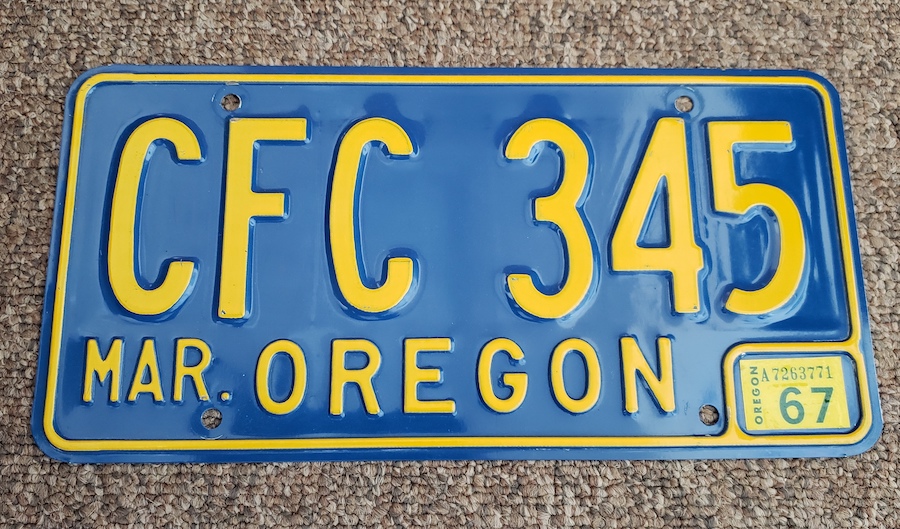
It seems like auto registration rates climb more and more every time I look at them. But with more cars on the road each year, that makes sense. After all, somebody has to pay for the wear and tear on roadways caused the daily commuter grind. Here in Oregon, a new 2-year registration for a car or truck is $150, along with a $21 DEQ test fee if the car is newer than 1974. That’s comparatively cheap to what other states charge, but it can still seem like a lot for a car that’s only driven sparingly.
When it comes to classic cars — the kind that only get driven in nice weather — the rules can be different, depending on your home state.
For example, here in Oregon, vehicles that are 25 years old or older qualify for “Special Interest” registration. You pay a one-time fee of $112 and get a permanent plate. Only one is required, mounted on the rear of the vehicle, and the vehicle must be maintained and used as a “Collector’s Item.” That means no daily driving or trips to the grocery store. But club activities, parades, and a certain degree of use for maintenance — which pretty much describes how a lot of us really use our cars — are all allowed.
Further, here in Oregon, you can use original-style vintage plates as well. In that case, the DMV will ship you a set of “Special Interest” stickers that you apply to the plate, which makes your classic legal to drive on the road using your original license plates. You can even buy an old set of plates and use them for your registration, provided they’re era-correct for the car and not already in the DMV system.
I’ve done this with my ’66 Caprice and am about to do it with my ’79 C10 — and the ’79 will be interesting, because it would have needed to go through emissions testing to gain a regular registration renewal. With the SP-system, it won’t need bi-annual testing anymore — but it’s unclear whether or not it’ll need to be tested or inspected before a set of SP plates or stickers are issued.
Why is that interesting? Because that truck’s original carbureted 350 is now an injected LQ9 6.0-liter LS engine with longtube headers and high-flow cats. It’s cleaner-burning than that old, original 350, but will it pass the red tape test? We’ll have to wait and see. But I don’t drive it enough to justify standard plates when SP versions are available, so that’s the route I’m going.
How do the rules differ for old cars versus new ones in your own home state? Sound off in the comments below.